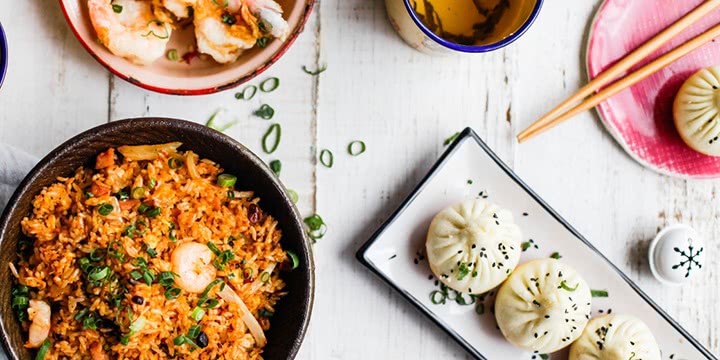Boiled, steamed, pan fried, deep fried.
With so many varieties of dumplings available from around the globe, there’s certainly a special place in Sydney’s heart for these delicious little buggers – so let’s expand our dumpling horizons and take a look at a few names currently doing the rounds on local menus.
Xiao Long Bao
A fan favourite in Sydney, the xiao long bao is more of a ‘dumpling’ in inverted commas. While not technically considered as such by many in the know, they appear on menus of some of Sydney’s most prominent dumpling restaurants such as Din Tai Fung and Taste Of Shanghai. The reason they’re not technically dumplings is because they have a thinner skin to most Chinese versions, such as your stock-standard jiaozi, and have a very distinct shape, pleated to a point at their apex to create a pillowy pocket of gelatinous goodness. They are also region-specific to Shanghai and usually made with pork or crab meat within (steaming hot) broth. However, due to their internally soupy nature, there is a correct way to eat xiao long bao. To avoid wearing the scalding broth, you must scoop one onto a spoon, gently pierce it with your chopsticks to empty the soup, eat the dumpling, then sip the cooled broth.
Gyoza
Also delightfully plentiful in Sydney are Japanese gyoza, historically borrowed from the Chinese jiaozi, but with small yet noticeable variations. While similarly pleated into a fan-like shape, gyoza are usually smaller, more delicate than their relatives and are served more as a side dish than as a meal on their own. Gyoza wrappers are also much thinner, which creates an altogether different texture, despite being typically pan fried on one side and steamed to create a beautifully golden bottom. If you’re a fan of gyoza then you’ll be stoked to know that there’s a whole bar devoted to them. Harajuku Gyoza in Potts Point sells pork, chicken, duck, prawn and vegetable options.
Mandu/Mandoo
If you don’t find our familiar fanned friend the gyoza in your local Japanese restaurant or sushi train, the dumplings there may actually resemble the Korean mandu, or Romanised ‘mandoo’. Loosely related to gyoza, they are rough semi-circles in shape, usually without any pastry pleats, and can be deep fried or steamed. The fillings can also differ slightly, with many Sydney restaurants serving them with thick bean vermicelli inside, creating a light but substantial consistency. For more traditional purists, there are variations filled with kimchi. If you’re hunkering for mandu of the seafood variety, try Sydney Madang in the CBD.
Momo
Lastly, we have the humble momo. A native to Tibet with the love spread through Nepal, Bhutan and sections of India, this South Asian dumpling is yet another distant relative of the jiaozi, and widely available in Sydney. Momos are quite different from their cousins, however, as they are spiced with hot chilli and paprika. They also contain fillings such as mushrooms, potato and cheese, as well as the familiar tropes of shrimp and chicken, and can often be found swimming in soup. For some traditional Nepalese momos of the steamed variety, you’ll have to try Himalayan Char Grill in Glebe.
[Main image: Taste Of Shanghai, Xiao Long Bao photo courtesy Alpha/Flickr / Mandu photo courtesy Ruocaled/Flickr / Momo photo courtesy Ritesh Man Tamrakar/Flickr / Gyoza photo courtesy Harajuku Gyoza]
While the list of Asian dumplings dominating Sydney’s cuisine scene certainly doesn’t end there, these can provide the stepping stones to a lifelong love affair with the little doughy gems.





































